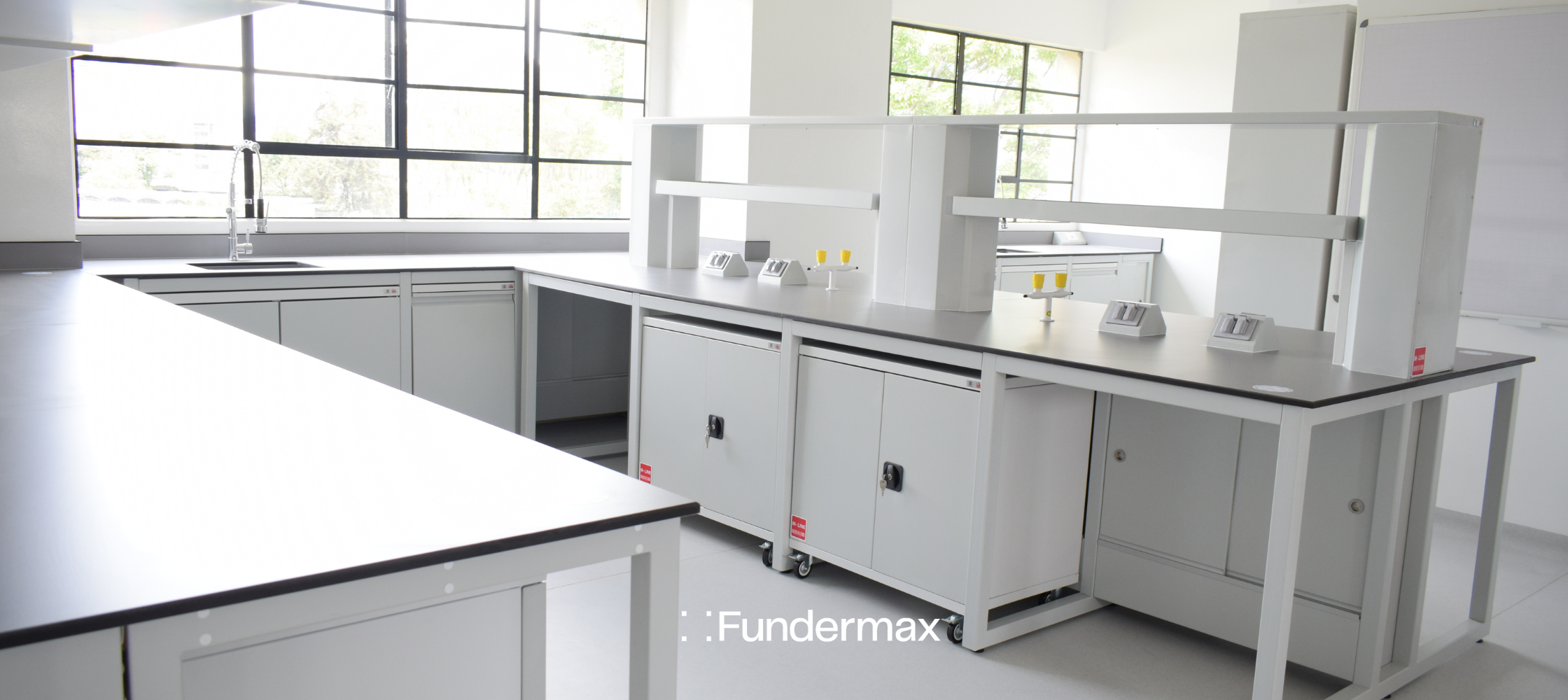
Durable vs. Sustainable Lab Materials
In understanding that independent data is available to aid in material selection, designers and lab planners play a pivotal role in enabling the reduction of carbon emissions – and thus are well placed to action change.
People tend to think of embodied carbon as a problem primarily with structural and building envelope materials. However, interiors of buildings are often renovated numerous times during the lifetime of a building and thus this element of embodied carbon may be much higher than previously believed, creating higher levels of pressure on interior designers and lab planners.
There are many low- and no-cost strategies that you can employ to reduce the embodied carbon of a building project - without affecting the overall budget. As widely understood, it is, without doubt, more cost-efficient and impactful to reduce embodied carbon early in the design phase, ie: before major design decisions that could be adjusted to meet environmental goals have been set in stone. Remembering too, research has highlighted that finishing materials can provide a 5% reduction in embodied carbon with no cost premium too! This is also where the longevity (lifetime) of a material becomes important and thus its durability – particularly within the lab environment.
Learn more about the important considerations for sustainable labs, in this article covering the impact of embodied carbon on sustainable lab design.
Durability vs. Sustainability
When a lab planner or designer identifies lab materials that will meet their standards for embodied carbon and help reduce the Global Warming Potential (GWP) and Ozone Depletion Potential (ODP) of the build, they must also ensure the materials are durable enough to meet the heavy demands of the lab sector.
The good news is, sustainable lab products and durable lab products are not mutually exclusive.
Sustainability should not – and does not – require a compromise in lab-grade quality. Nor does it require an expensive price tag. Thus, the durability vs. sustainability question shouldn’t really be a question at all, as it is possible to identify materials that meet your durability requirements while also being highly sustainable with low GWPs and ODPs.
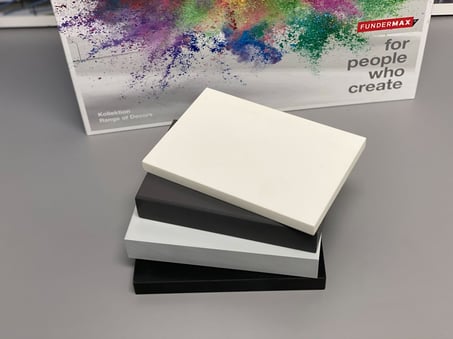
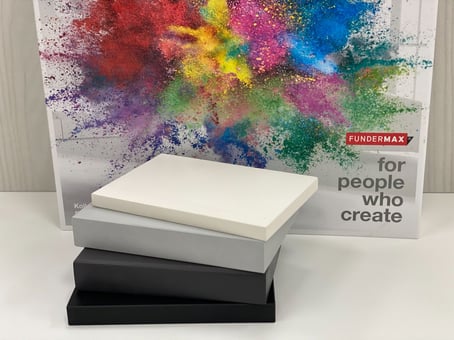
Identifying Sustainable, Durable Lab Products
Material transparency plays a large role in identifying materials qualified for use in sustainable labs. The SEFA 3 Recommended Practices (and specifically, the chemical resistance independent test data) are commonly used, particularly for lab work surfaces. In addition, consider the following physical attributes to aid in identifying durable lab products.
Abrasion and Scratch Resistance
With more equipment being used in the lab, the likelihood of scratches increases. Also, as harsher cleaning chemicals are introduced and cleaning cycles increase, lab work surfaces can be impacted. Therefore, consider testing scratch resistance and abrasion resistance.
Heat Resistance
How much heat can the work surface endure without blistering or discoloration? Can a naked flame be held to the surface? Along with heat resistance comes the thermal shock element. Consider the range of temperatures (hot and cold) to which the material will be subjected, as well as the duration of exposure and if rapid changes in temperature may be encountered.
Flammability/Flame Spread
Is the material Class A fire rated? What other code requirements are needed for the intended use?
Load Bearing Capability
Consider the maximum loads the lab work surfaces will have to bear and the extent of support required underneath the work surface.
Ease of Cleaning
A regular schedule of maintenance and housekeeping is needed in any lab environment. Some laboratories, like those working with pathogens and radioactive isotopes, may be required to select non-porous materials for their lab work surfaces. Consider how easily the surfaces can be cleaned and the ability to withstand frequent contact with aggressive disinfectants.
Lightfastness
With more natural light being used in labs, the importance of color fastness and fade resistance has also increased. Additionally, consider whether a material will degrade under regular UV exposure.
Weight
Consider the material weight per square foot and its impact on loading, cantilevered tops, and structural engineering capacities. Weight also plays a role in freight costs and installation costs.
Water Absorption
Consider the effects of moisture on lab work surface materials. For instance, is there a minimal level of dimensional change in percentage of length and width?
Machinability
Consider the ease with which a given material can be worked with onsite, as well as the ability to perform repairs if needed.
These considerations, combined with requesting test data and results for critical functionality, provide assurances on the durability (and corresponding longevity) of a material. These, in turn, offer strong guidance for your sustainable material selections.
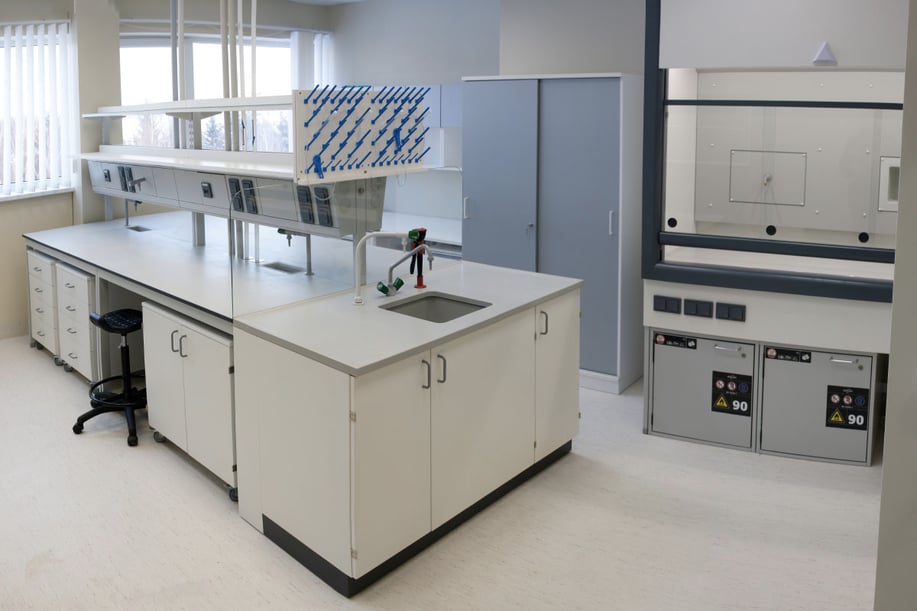
Durable Options for Sustainable Labs
Without a doubt, there are a host of potential materials available for use in laboratory design. Both environmental and cost savings goals can be met by selecting sustainable lab products that meet specified durability requirements and provide a level of adaptability – allowing for use beyond work surfaces, for instance.
In addition, materials with a high level of recycled content and low GWPs (like Fundermax lab grade phenolic panels with 65% recycled core paper) are becoming increasingly prevalent.
Plus, with a wide variety of color choices and color through core options, it is no surprise that phenolic resin panels (specifically, Max Compact Interior Plus and Max Resistance2) are a popular choice in sustainable lab design.
Lab Grade, Sustainable Materials
At Fundermax, there are three material options for laboratory interiors from base level to superior lab grade. With a wide range of thickness options, our phenolic resin panels are perfectly suited for lab work surfaces, casework, fume hood decks, and more.
As mentioned above, Fundermax lab grade phenolic panels are produced sustainably and contain a core of 100% post-consumer recycled product, resulting in 65% recycled content in the finished panels. Fundermax is currently the ONLY manufacturer sustainably sourcing and sustainability manufacturing a lab grade material under the phenolic spectrum.
In current recycling processes, a variety of waste paper and fiber sources can be used. These variations result in significant limitations to the overall quality of the materials produced. For this reason, Fundermax only uses high quality paper fibers that are being recycled (upcycled) for the first time. Our holistic approach in the supply chain allows us to guarantee the quality of our product while making a huge contribution to the environment.
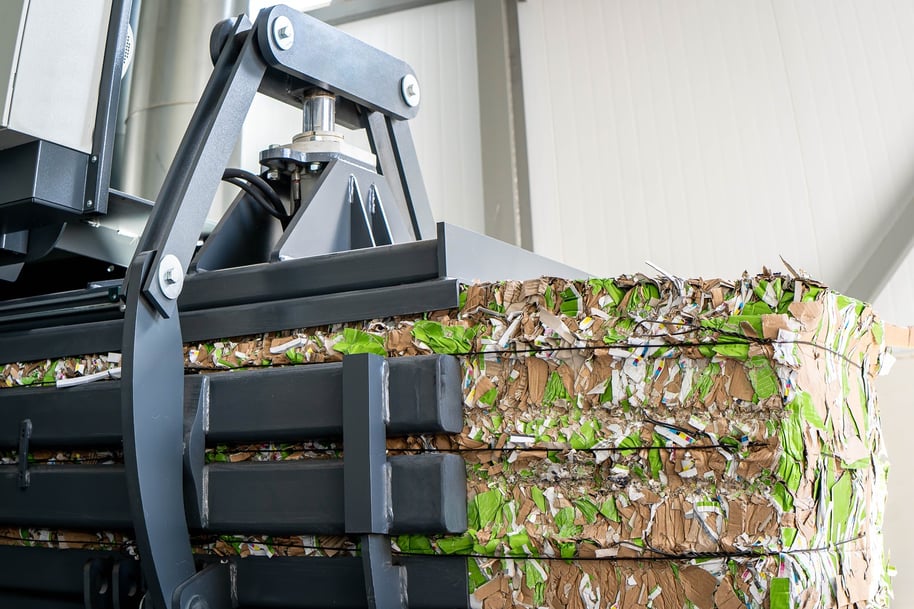
Recycle vs. Upcycle
Upcycling refers to reusing an object or material in a way that creates a product or material of higher quality or value than the original. So, we say that we are upcycling those post-consumer paper fibers because of the incredibly valuable long-term storage of CO2 offered by the longevity of Fundermax compact panels (in excess of 50 years!).
Through this upcycling process, an equivalent quantity in excess of 22,000 tons of CO2 can be ‘bound’ (embodied) annually. To store this amount of CO2 in a year, you would need a forest with 1.8 million trees. In addition, by reusing the paper fibers, we are saving approximately 20,000 trees each year. All fibers sourced by Fundermax are FSC certified, further solidifying our commitment to sustainability.
For further information on the range of durable and sustainable lab products manufactured by Fundermax, contact us today. We are committed to helping designers and architects create freely and sustainably.

